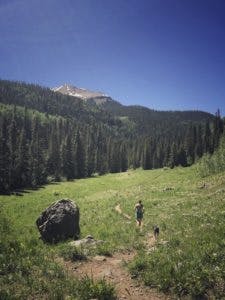I always love finding out new information regarding the impact of running on our bodies. As a runner, I know the love-hate relationship that I have with running as sometimes it feels like the thing that can cure my ailments and other times it feels like it may cause them. From some of my older patients, I have heard everything from, “Running is the best activity for my heart that has kept me strong throughout my life,” to, “I wish that I never started running because it ruined my knees.” With so many varied experiences, the question often comes up about whether or not running is beneficial or detrimental long-term. As it turns out, not only me and my patients are asking this question, but researchers are as well.

A recent systematic review and meta-analysis, which are quality ways to assess all of the available data regarding a specific question, sought to find out if there was any association between running and hip and knee osteoarthritis, which is a condition where your joints undergo degenerative changes that may cause pain and dysfunction.1 And even beyond that, the researchers wanted to find out if the running intensity and history of years running had any influence on this association.1 The researchers ended up being able to analyze 25 studies, which gave them a good sample of information to help them answer their questions.1

Overall, this analysis of studies found that running was not necessarily associated with osteoarthritis and, in fact, recreational runners had lower odds of hip and/or knee arthritis when compared to competitive runners and sedentary non-runners.1 In terms of years running, the people that ran less than 15 years had a lower association with osteoarthritis than those who ran more than 15 years.1 That being said, most of the studies that looked at running for more than 15 years were focused on competitive runners, who already had higher odds of developing arthritis, and they were unable to find conclusive information on recreational runners that ran for more than 15 years.1 The definition of competitive runners were runners that were reported as professional, elite, or ex-elite athletes, but the amount of miles of running was not necessarily described.1
So, what’s the take-away? It seems that recreational runners may be better off for having lower odds of developing hip or knee osteoarthritis than those who run competitively and those who don’t run at all and are more sedentary in general, especially if they run for less than 15 years total.1 As far as knowing about the impact of running recreationally for more than 15 years, there is not quite enough information to tell!1 There are more factors that go into running that can potentially affect your joints and pain, which are factors that PTs are specifically trained to identify and treat. If you have questions about how running might be impacting your joints, make sure to see a PT to have your running form and strengths/weaknesses analyzed to find an individualized approach to your issues.
- Alentorn-Geli E, Samuelsson K, et al. The Association of Recreational and Competitive Running with Hip and Knee Osteoarthritis: A Systematic Review and Meta-Analysis. Journal Ortho Sports Phys Ther. 2017;47(6):373-390.

